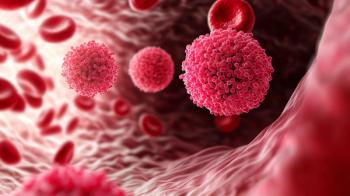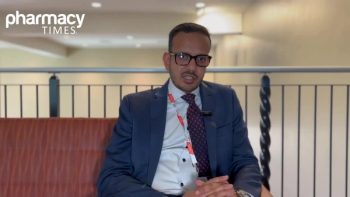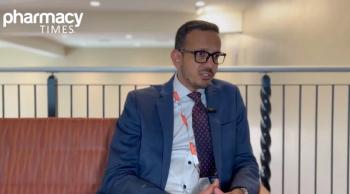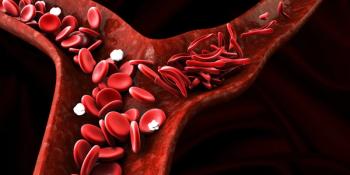
Welcome to the ADHD Condition Center
Pharmacists play an important role in helping patients understand ADHD's various forms, as well as the condition's responsiveness to medication and other therapies.
Pharmacists play an important role in helping patients understand ADHD’s various forms, as well as the condition’s responsiveness to medication and other therapies.
Attention-deficit/hyperactivity disorder (ADHD), traditionally considered a pediatric problem, is now understood to affect some patients well into adulthood. ADHD is a complex condition, and it has become increasingly apparent that when undiagnosed or untreated the condition can have serious personal, academic, societal, and financial consequences. ADHD’s symptoms—inattention, hyperactivity, and impulsivity—change as the patient ages, with hyperactivity and impulsivity diminishing but inattention generally persisting. Many ADHD patients also experience learning disabilities and anxiety, mood, and disruptive disorders.
Children are affected most often, with boys at higher risk than girls. About half of those with ADHD will carry symptoms into adulthood. In the last decade, ADHD’s prevalence in children aged 5 to 12 years has increased from 6% to almost 10%. Up to 80% of affected children will be impaired functionally through adolescence. In addition, up to 7% of adult Americans have been diagnosed with ADHD.
Researchers have yet to determine the neuropathology that causes ADHD, but they suspect that genetics, central nervous system insults, and numerous environmental factors may contribute to ADHD development. Prefrontal cortex aberrations in norepinephrine (which reduces distractibility and governs executive function) and dopamine (which increases attention) have been noted in ADHD patients. In addition, MRI studies have identified smaller total cerebral volumes and decreased striatal and prefrontal complex blood flow in ADHD patients.
Differentiating between children’s naturally high activity levels and ADHD-caused behavior can be challenging. Pediatricians and ADHD experts look at children’s symptom through a lens of age-appropriateness, looking for 6 or more symptoms in the previous 6 months in at least 2 settings. Children with ADHD often squirm or fidget, have difficulty engaging with others, talk or blurt out answers without regard for others, or dash about or climb excessively. Their inability to pay attention manifests as limited grasp of detail, poor compliance with direction, and distraction or forgetfulness. The potential ramifications are obvious.
This Pharmacy Times ADHD Condition Center will present the latest findings in diagnosis, treatment (behavioral and pharmacologic), and societal concerns, with an emphasis on pharmacotherapy. Patients receiving pharmacotherapy with or without other forms of treatment tend to show more improvement in hyperactive-impulsive symptoms than those receiving behavioral management or community-based treatment alone.
The Drugs
Stimulants (methylphenidate and amphetamine), whose mechanism of action is directed at dopamine, remain the drugs of choice for ADHD. These medications can reduce (but rarely eliminate) symptoms in up to 80% of ADHD patients. These agents are, however, controlled substances and are increasingly identified as drugs of abuse.
In 2002, the FDA approved the first nonstimulant medication for treatment of ADHD, the norepinephrine reuptake inhibitor atomoxetine. In addition, some clinicians prescribe antidepressants off-label for ADHD patients as well as clonidine, and, in younger children, guanfacine.
The Issues
Despite improved diagnosis and treatment, ADHD remains a controversial pediatric disorder. Parents have concerns that teachers are too quick to label their students as having ADHD, which can be stigmatizing. In addition, many people believe that ADHD is over-diagnosed. Ethicists focus on children’s role in informed consent and the potential for coercion. Many worry about advertising campaigns that may mislead television viewers. Other ongoing controversies involve ADHD medications’ proven or potential side effects, unknown long-term effects, and potential for abuse or addiction. Additionally, the propensity for stimulant abuse has created a need for new diversion-resistant dosage forms and public health campaigns to educate the public about the prescription drug abuse problem and drugs used to treat ADHD in particular.
The Goal
The best way to put medical controversies to rest is to look to the best controlled studies and present balanced information. This condition center aims to educate with science-based information that will help pharmacists and their patients explore ADHD’s various forms and its responsiveness to medication and other therapies.
Ms. Wick is a visiting professor at the University of Connecticut School of Pharmacy and a freelance writer from Virginia.
Editor's note: This post has been updated and corrected since it was originally published.
Newsletter
Stay informed on drug updates, treatment guidelines, and pharmacy practice trends—subscribe to Pharmacy Times for weekly clinical insights.



















































































































































































































